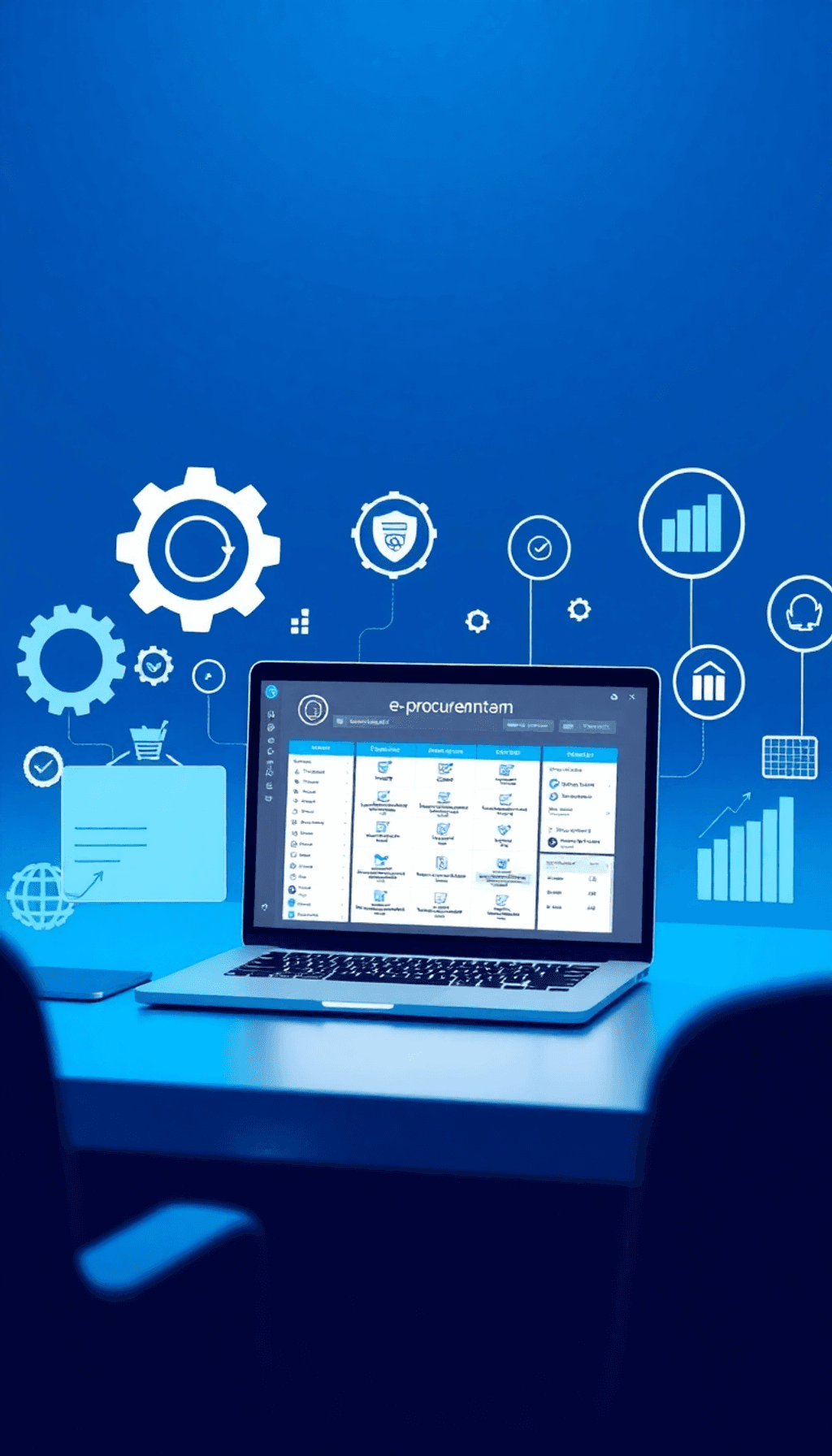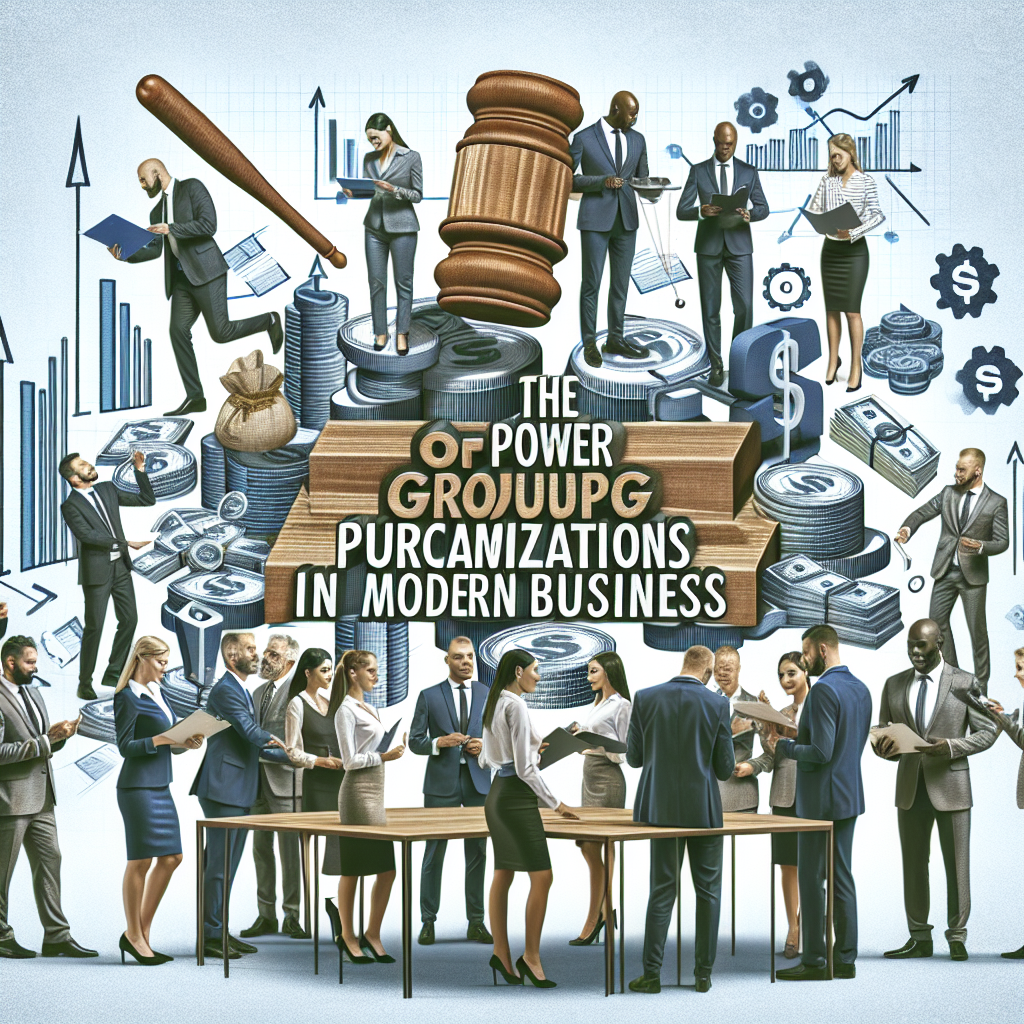Introduction
E-procurement platforms are digital solutions that streamline the procurement process by automating purchase orders, supplier management, and compliance tracking. These systems play a crucial role in modern business practices by enhancing efficiency, reducing costs, and improving transparency.
Key aspects of e-procurement include:
- Automation: Reduces manual errors and saves time.
- Centralization: Provides a unified view of all procurement activities.
- Cost Savings: Enables better negotiation and sourcing strategies.
This article explores various facets of e-procurement platform reviews. You will learn about the essential components of these systems, their benefits, challenges in implementation, best practices for successful deployment, and a review of popular e-procurement solutions available in the market. Insights into client testimonials and case studies will further illuminate the impact of these platforms on organizations.
Moreover, e-procurement is not just about streamlining processes. It’s also about building resilience for tough times as seen in our piece on procurement in crisis. This aspect becomes particularly relevant when considering how to maximize federal grant funding for nonprofits, which we discuss in our article about maximizing federal grant funding.
In addition to these strategic insights, we also explore how e-procurement can be leveraged to boost employee morale with necessary supplies such as those discussed in our article on boosting employee morale with break room supplies or ensuring essential PPE for airborne precautions in healthcare settings as outlined in our piece about essential PPE for airborne precautions in healthcare.
Understanding E-Procurement Platforms
E-procurement platforms are digital solutions designed to streamline procurement processes. These platforms facilitate the online purchase of goods and services, transforming traditional procurement methods into efficient, automated workflows.
Key Components of E-Procurement Systems
1. Supplier Management
- Centralizes supplier data for easier evaluation and selection.
- Enhances communication and collaboration with suppliers through integrated tools, a key aspect of [supplier relationship management](https://hubzonedepot.com/tag/supplier-relationship-management).
2. Budget Control
- Provides real-time tracking of spending against allocated budgets.
- Enables organizations to set spending limits and approval workflows to prevent overspending, which is particularly useful in managing [tail spend](https://hubzonedepot.com/tag/tail-spend-management).
3. Compliance Management
- Ensures adherence to regulatory requirements and internal policies.
- Automates documentation and auditing processes, reducing the risk of non-compliance.
Stages of the E-Procurement Process
The e-procurement process typically follows several key stages:
- Requisitioning: Users submit requests for goods or services through the platform.
- Approval: Requests undergo a predefined approval workflow, ensuring alignment with budgetary constraints.
- Ordering: Once approved, orders are placed directly with suppliers via the platform.
- Receiving: Upon delivery, received goods are verified against order specifications.
- Invoicing and Payment: Invoices are matched with orders for accuracy before payment is processed.
Understanding these components and stages enables organizations to effectively implement e-procurement systems. This knowledge lays a solid foundation for exploring the benefits associated with adopting such platforms in modern business practices.
Strategic Sourcing vs Category Management
It’s important to note that within the realm of e-procurement, there are different strategies that can be employed. For instance, [strategic sourcing](https://hubzonedepot.com/uncategorized/strategic-sourcing-vs-category-management-whats-the-difference) focuses on continuously evaluating and improving purchasing activities while category management is about managing a specific category of spend as a strategic business unit. Both approaches can be integrated into e-procurement systems for enhanced efficiency.
Maximizing Supplier Performance
Furthermore, maximizing supplier performance is crucial in ensuring quality and reliability in procurement. This involves setting clear expectations, regular performance evaluations, and fostering open communication channels with suppliers.
Mythbusting GPOs in Purchasing
Lastly, it’s essential to dispel some common myths surrounding Group Purchasing Organizations (GPOs). There are several [myths about GPOs](https://hubzonedepot.com/uncategorized/purchasing-4-mythbusting-gpos) that can lead to misconceptions about their role in e-procurement. Understanding these myths can help organizations make informed decisions when considering GPOs as part of their procurement strategy.
Benefits of Implementing E-Procurement Platforms
E-procurement platforms offer numerous advantages that greatly enhance business operations. Key benefits include:
- Automation of Manual Processes: By automating repetitive tasks, e-procurement platforms streamline procurement activities. This leads to significant efficiency gains, allowing your team to focus on strategic initiatives rather than administrative duties.
- Reduction of Errors: Streamlined workflows minimize the chances of human error. Automated processes ensure that data entry and approvals are handled consistently, reducing discrepancies that can arise from manual input.
- Enhanced Sourcing Strategies: With improved visibility into supplier performance and pricing, businesses can make informed decisions. This optimization leads to effective sourcing strategies such as hiring top talent and substantial cost savings across various categories, including MRO and office supplies. Furthermore, leveraging collective spend can result in drastic cost reduction.
- Support for Sustainability Initiatives: E-procurement platforms contribute to sustainability efforts by minimizing paper use. Digital documentation reduces waste and supports environmentally friendly practices, aligning with corporate social responsibility goals.
The integration of these benefits into your procurement process not only enhances operational efficiency but also promotes a sustainable approach to business practices. Moreover, adopting frugal living principles can help maximize cost savings in daily operations. In addition, understanding the importance of diversity, equity, and inclusion in the workplace can further enhance business success. Lastly, for businesses facing challenges due to limited resources, implementing some essential tips on how to succeed with limited resources could provide valuable insights for overcoming these obstacles.
Challenges in E-Procurement Implementation
Implementing an e-procurement platform can present several challenges that organizations must navigate effectively. Key obstacles include:
1. Transition Costs
Moving from traditional procurement methods to an e-procurement system often incurs significant expenses. These costs may include software licenses, hardware upgrades, and potential disruptions to ongoing operations. Organizations should budget appropriately to avoid unexpected financial strain.
2. Time-consuming Training Processes
Employees require adequate training to utilize new systems fully. This training period can be lengthy, impacting productivity as staff adjust to new workflows and tools. A well-structured training program is essential for user efficiency and confidence. Continuous learning and strategic thinking are crucial for procurement success, as highlighted in Frank Corris’s transformative journey.
3. Onboarding Difficulties for Suppliers and Stakeholders
Engaging with suppliers and stakeholders during the transition can be challenging. Some may resist change due to unfamiliarity with digital processes or fear of complexity. Clear communication and support are vital to facilitate smooth onboarding and foster stakeholder readiness.
Additionally, organizations must consider the dynamics between purchasing groups versus group purchasing organizations, which can significantly impact their procurement strategies.
Moreover, embracing the top trends in supplier innovation can help organizations optimize their procurement processes further. Addressing these challenges proactively is crucial for a successful transition to an e-procurement platform. Recognizing potential pitfalls allows for better planning, ensuring that organizations reap the long-term benefits of improved procurement practices, including procurement optimization, unlocking exclusive membership benefits, and understanding key terms in the field through resources like the comprehensive procurement glossary.
Best Practices for Successful Implementation
Implementing an e-procurement platform requires strategic planning and execution. Focus on the following best practices to ensure success:
1. Defining Clear Objectives
Establish specific goals that align with your organization’s procurement needs. Clear objectives guide the implementation process and help measure success.
2. Assessing Current Procurement Processes Thoroughly
Conduct a detailed analysis of existing procurement workflows. Identify inefficiencies and areas for improvement to tailor the e-procurement system effectively.
3. Involving Key Stakeholders in Planning and Execution
Engage relevant stakeholders, such as procurement teams, finance departments, and end-users. Their input fosters buy-in, ensures diverse perspectives, and facilitates smoother adoption.
4. Providing Comprehensive User Training
Offer extensive training programs to all users. Familiarity with the new system reduces resistance to change and enhances user confidence, leading to better utilization of the platform.
Implementing these best practices not only streamlines the transition but also sets a solid foundation for ongoing success in your e-procurement journey. Emphasizing change management throughout this process will further enhance user acceptance and increase overall efficiency. Additionally, transparent supplier communication is crucial in building trust and driving business growth during this transition. If you have any questions or need further assistance, feel free to contact us.
Popular E-Procurement Systems Review
E-procurement platforms have gained traction in the market, offering various features tailored to meet business needs. Here are some of the most notable systems:
1. ProcureDesk
Known for its customizable features, ProcureDesk allows businesses to adapt the platform according to their unique requirements. This flexibility makes it suitable for organizations of all sizes. Users appreciate its user-friendly interface and robust reporting capabilities.
2. Tradogram
This platform is ideal for small companies seeking efficiency in their procurement processes. Tradogram provides essential tools that simplify purchasing tasks, making it easier for teams to manage budgets and supplier relationships. Its straightforward design helps small businesses streamline operations without overwhelming complexity. For those considering a career shift into this field, entry-level procurement jobs can be a great starting point.
3. Precoro & Procurify
Both platforms are designed with growing and mid-sized businesses in mind. They offer scalable solutions that can evolve with your organization. Precoro emphasizes automation and ease of use, while Procurify focuses on enhancing visibility across procurement activities, ensuring more informed decision-making.
4. Kissflow & Coupa
Targeting complex and enterprise-level needs, these platforms provide comprehensive solutions for large organizations. Kissflow integrates various business processes into a single workflow, enhancing collaboration and efficiency. Coupa is known for its advanced analytics and spend management capabilities, making it a top choice for organizations looking to optimize procurement strategies.
Each platform has strengths tailored to different business sizes and needs, allowing you to choose one that best fits your specific requirements. However, it’s important to note that not all procurement functions require a large team; managing a one-person procurement function can also be optimized with strategic solutions for cost efficiency and supplier management.
Comparative Analysis of Features and Pricing for E-Procurement Systems Review
When evaluating e-procurement platforms, a thorough feature comparison provides insights into their capabilities. Key features often include:
- Supplier Management: Tools for onboarding, evaluation, and communication with suppliers.
- Budget Control: Features that enable tracking and adherence to budget limits.
- Compliance Management: Mechanisms ensuring regulatory adherence within procurement processes.
Each platform presents unique strengths tailored to different business needs.
Pricing structures vary significantly among e-procurement systems. Consider the following aspects:
- Subscription Fees: Monthly or annual payments that may be based on user count or transaction volume.
- Tiered Pricing Models: Options allowing businesses to scale features as they grow, catering to both small companies and large enterprises.
- Additional Costs: Potential fees for extra services like training, support, or advanced features.
Value propositions play a critical role in these pricing models. For example, platforms such as Coupa may offer extensive analytics tools that justify higher costs through enhanced decision-making capabilities.
User experience is another vital consideration. Client testimonials often highlight the ease of use, customer support quality, and integration capabilities. Positive feedback frequently emphasizes:
- Seamless onboarding processes.
- Responsive customer service teams.
- Intuitive user interfaces that reduce training time.
These elements combine to provide a comprehensive understanding of what each e-procurement platform delivers, enabling you to make informed decisions tailored to your organization’s needs.
However, it’s important to communicate the value of procurement effectively. Avoiding common procurement terms that may confuse stakeholders can significantly enhance this communication process.
Client Testimonials and Case Studies on E-Procurement Systems Review
Client experiences reveal the substantial impact of e-procurement platforms on service quality and cost management.
Positive Feedback on Service Quality
Many users commend the responsiveness and expertise of e-procurement providers. A client from a public sector organization noted, “The level of support we received was unparalleled. They guided us through every step, ensuring a smooth transition.” Such testimonials underscore the importance of personalized customer service in enhancing user satisfaction.
Case Studies Demonstrating Cost Reductions
A mid-sized manufacturing firm utilized an e-procurement platform to streamline its purchasing processes. The results were impressive:
- Cost Reduction: Achieved a significant reduction of 25% in MRO supplies costs.
- Efficiency Gains: Reduced order processing time by 40%, allowing the team to focus on strategic tasks.
Another case study showcases a large healthcare provider that reported saving over $1 million annually through optimized procurement practices. These real-world examples highlight how e-procurement systems can deliver competitive pricing and improved operational efficiency.
User experiences are vital in understanding the value of these platforms, making them essential for informed decision-making. For those looking to further enhance their procurement strategies, exploring options such as the best procurement software and outsourcing companies could be beneficial.
Conclusion
The e-procurement landscape continues to evolve, influenced by several future trends that enhance efficiency and effectiveness. Key developments include:
- Increased Automation: Streamlining procurement processes through AI and machine learning improves accuracy and reduces manual errors.
- Integration with Analytics: Advanced data analytics for decision-making allows organizations to assess supplier performance and manage budgets effectively.
- Mobile Accessibility: Greater demand for mobile solutions enables procurement professionals to manage activities from anywhere, increasing flexibility.
- Sustainable Practices: A shift towards environmentally friendly procurement practices helps companies reduce waste and enhance their social responsibility.
E-procurement benefits summarize a clear path toward improved operational efficiency, lower costs, and enhanced supplier relationships. As technology continues to advance, these e-procurement platform reviews highlight the importance of staying informed about evolving tools and strategies in the procurement space. Embracing these trends will position businesses for sustainable growth and competitive advantage.
Furthermore, as the demand for skilled professionals in this field increases due to these advancements, it’s essential to understand the procurement engineer salary trends that will emerge in 2025. This insight can help prospective procurement engineers prepare for a promising career path amidst the changing landscape of e-procurement.
FAQs (Frequently Asked Questions)
What are e-procurement platforms?
E-procurement platforms are digital solutions that facilitate the procurement process, allowing organizations to manage supplier relationships, budget controls, and compliance more effectively. They streamline procurement workflows and enhance overall efficiency.
What are the benefits of implementing e-procurement platforms?
Implementing e-procurement platforms leads to automation of manual processes, resulting in efficiency gains and reduced errors. Additionally, they enhance sourcing strategies for cost savings and support sustainability initiatives by minimizing paper usage.
What challenges might organizations face when implementing e-procurement?
Organizations may encounter several challenges during implementation, including transition costs associated with moving to an e-procurement platform, time-consuming training processes for users, and onboarding difficulties for suppliers and stakeholders.
What best practices should be followed for successful e-procurement implementation?
Successful implementation requires defining clear objectives, thoroughly assessing current procurement processes, involving key stakeholders in planning and execution, and providing comprehensive training to users.
Can you name some popular e-procurement systems?
Some popular e-procurement systems include ProcureDesk, which offers customizable features; Tradogram, ideal for small companies; Precoro and Procurify for growing businesses; and Kissflow and Coupa targeting complex enterprise-level needs.
How can organizations evaluate different e-procurement systems?
Organizations can evaluate different e-procurement systems by comparing key features across platforms, analyzing pricing structures and value propositions, and considering user experience insights based on client testimonials.





